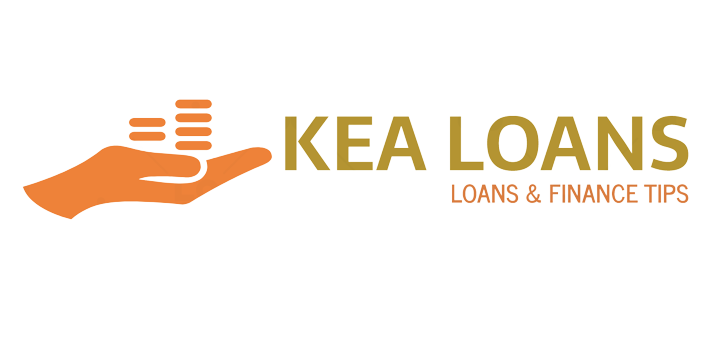
Are you struggling to pay off your student loans? The recent ruling by the Supreme Court on student loan debt relief could be a game-changer for borrowers like you. In this post, we’ll break down what the ruling means and how it can potentially make a difference in your financial situation. Whether you’re drowning in debt or just looking for some guidance, keep reading to learn more about how this landmark decision could impact your future.
Introduction: Overview of Student Loan Debt Relief and the Supreme Court’s ruling
As of 2019, student loan debt in the United States has reached an all-time high of $1.56 trillion. The average graduate leaves school with over $28,000 in student loan debt. Student loan debt is now the second largest type of consumer debt in the country, behind only mortgage debt.
The high cost of tuition and the burden of student loan debt have caused many borrowers to struggle to make their monthly payments. Student loan borrower advocates argue that this struggle is unfair and unjust, especially given the fact that other types of debt can be discharged in bankruptcy proceedings.
In September 2019, the Supreme Court heard oral arguments in a case that could potentially provide relief for struggling student loan borrowers. The case, National Collegiate Student Loan Trust v. ABS Capital Partners Inc., revolves around whether or not certain types of private student loans can be discharged in bankruptcy proceedings.
A ruling in favor of the borrower would provide some much-needed relief for those struggling to repay their student loans. However, a ruling against the borrower could have disastrous consequences, making it even harder for borrowers to get out of debt. The Supreme Court has yet to issue a ruling in this case, but their decision could have major implications for student loan borrowers across the country.
History of the Ruling:
The Supreme Court’s ruling on student loan debt relief is a major victory for borrowers. The ruling means that borrowers can now discharge their student loans in bankruptcy, just like any other type of debt. This is a huge win for borrowers who are struggling to repay their loans, and it will help to ease the burden of student loan debt.
The ruling was the result of a case brought by a borrower named Robert Haines. Haines filed for bankruptcy in 2012, and he attempted to discharge his student loans. The court ruled against him, saying that student loans could not be discharged in bankruptcy. Haines appealed the decision, and the case made its way to the Supreme Court.
In a unanimous decision, the Supreme Court ruled in favor of Haines and overturned the lower court’s decision. The Court said that “student loans impose an undue hardship on borrowers” and that they should be treated like any other type of debt in bankruptcy proceedings.
This is a major victory for borrowers, and it will help to ease the burden of student loan debt. If you are struggling to repay your loans, you should speak with an attorney to see if you may be able to discharge your loans in bankruptcy.
– What was the original 2015 ruling?
In 2015, the Supreme Court ruled that student loan debt could not be discharged in bankruptcy unless the borrower could prove that paying back the loans would cause them an undue hardship. This ruling made it nearly impossible for borrowers to get relief from their student loan debt through bankruptcy. The court’s decision was based on the concept of “fresh start” bankruptcy, which is designed to give people a financial fresh start after they have resolved their debts. However, the court found that student loan debt is different from other types of debt because it is not possible to discharge it through bankruptcy. The court reasoned that if borrowers could discharge their student loan debt through bankruptcy, they would have no incentive to repay their loans and would default on them. This would ultimately hurt lenders and make it more difficult for borrowers to obtain financing for their education. The court’s ruling was a major victory for lenders and a setback for borrowers who are struggling to repay their loans.
– How has the Supreme Court ruling impacted student loan borrowers?
The Supreme Court’s ruling on student loan debt relief means that borrowers who are struggling to repay their loans may have a better chance of having their loans forgiven. The ruling will also impact the way lenders and servicers handle borrowers who are in default on their loans.
Borrowers who are struggling to repay their student loans may be able to have their loans forgiven if they can prove that they tried to repay their loans but were unable to do so because of financial hardship. This is a major victory for borrowers who have been struggling to repay their student loans.
The ruling will also impact the way lenders and servicers handle borrowers who are in default on their student loans. Lenders and servicers will now be required to provide borrowers with more information about their options for repayment, including information about income-based repayment plans. This is good news for borrowers who are struggling to make ends meet each month.
Impact of the Ruling on Borrowers:
The Supreme Court’s ruling on student loan debt relief means that borrowers will no longer be able to have their loans discharged through bankruptcy. This is a huge blow to borrowers who are struggling to repay their loans, and it will make it much harder for them to get out of debt. The ruling is also likely to increase the cost of borrowing for students, as lenders will now be able to charge higher interest rates.
– Does it mean all loans are forgiven?
The Supreme Court’s ruling on student loan debt relief means that all loans are not forgiven. However, the ruling does provide some relief for borrowers who are struggling to repay their loans. The ruling may also make it easier for borrowers to discharge their loans in bankruptcy.
– What about loans that are still in repayment or default status?
The Supreme Court’s ruling on student loan debt relief is a major victory for borrowers. The ruling means that all private student loans are dischargeable in bankruptcy. This is huge news for borrowers who are struggling to repay their loans or are in default.
The ruling is a major blow to the student loan industry. It will likely increase the number of borrowers who file for bankruptcy and try to discharge their student loans. The industry had argued that private student loans should not be treated the same as other types of debt in bankruptcy.
The Supreme Court’s ruling will have a significant impact on borrowers who are struggling to repay their loans or are in default. If you are one of these borrowers, you should speak with a bankruptcy attorney to see if filing for bankruptcy is right for you.
Benefits & Drawbacks for Student
The Supreme Court’s ruling on student loan debt relief means that borrowers will no longer be able to discharge their loans in bankruptcy. This is a major setback for borrowers who are struggling to repay their loans, as it makes it much harder to get out of debt.
There are some benefits to the ruling, however. For one, it gives lenders more certainty that they will be repaid. It also makes it more difficult for borrowers to discharge their loans through fraud or other means.
Overall, the ruling is a major setback for borrowers who are struggling to repay their student loans. It will make it harder to get out of debt and could lead to more defaults.
Conclusion
The Supreme Court’s ruling on student loan debt relief is a victory for borrowers and advocates who have long pushed for more equitable policies in higher education. This ruling provides hope that the trillion-dollar crisis of student loan debt can be addressed with tangible reforms, such as expanded access to income-driven repayment plans, that will benefit all borrowers. By taking a stand against unfair practices within the student loan industry and working together to create real solutions, we can make sure every borrower has an equal shot at achieving financial stability.

